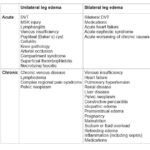Kidney stones, medically known as nephrolithiasis, are a common and painful condition. While the symptoms like severe flank pain, hematuria (blood in urine), nausea, and vomiting are often indicative of kidney stones, these can also overlap with a variety of other medical issues. Accurately diagnosing kidney stones involves a process of differential diagnosis, where doctors systematically rule out other conditions that present with similar symptoms. This ensures patients receive the correct treatment and avoid potential complications from misdiagnosis.
One of the primary conditions to consider in the differential diagnosis of kidney stones is a urinary tract infection (UTI). UTIs, particularly kidney infections (pyelonephritis), can cause flank pain and hematuria, mimicking kidney stones. However, UTIs often present with additional symptoms not typical of kidney stones, such as fever, dysuria (painful urination), and increased urinary frequency and urgency. Urinalysis is crucial in differentiating between these two conditions, as it will typically show bacteria and white blood cells in UTI cases, which are not usually present in uncomplicated kidney stone cases unless an infection is also present.
Abdominal pain, especially in the lower right quadrant, might initially be mistaken for kidney stone pain, but could also indicate appendicitis. Appendicitis, an inflammation of the appendix, can cause pain that radiates to the flank and is often accompanied by nausea, vomiting, fever, and localized tenderness in the right lower abdomen. While both conditions can cause significant pain, the location and associated symptoms can help differentiate them. Physical examination, blood tests to check white blood cell count, and imaging studies like CT scans can help distinguish between appendicitis and kidney stones.
Musculoskeletal issues, such as back strain or muscle spasm, can also cause flank pain. However, unlike kidney stones, musculoskeletal pain is typically related to movement or posture and lacks urinary symptoms like hematuria or nausea. A careful history focusing on the onset and nature of pain, along with a physical examination to assess range of motion and palpate for muscle tenderness, can often help differentiate musculoskeletal pain from kidney stone pain.
In women, gynecological conditions like ovarian cysts or ectopic pregnancy should also be considered in the differential diagnosis of kidney stones. Ovarian cysts can cause pelvic and flank pain, while an ectopic pregnancy, a life-threatening condition where a fertilized egg implants outside the uterus, can present with severe abdominal and flank pain, often accompanied by vaginal bleeding and pregnancy symptoms. A pelvic exam, pregnancy test, and pelvic ultrasound are essential to rule out these gynecological causes of flank pain in women presenting with symptoms suggestive of kidney stones.
Another condition that can mimic kidney stone pain is gallstones. Gallstones, stones in the gallbladder, typically cause right upper quadrant abdominal pain, which can sometimes radiate to the back and be confused with flank pain. However, gallstone pain is often associated with fatty food intake and may not present with urinary symptoms. Ultrasound of the gallbladder can effectively diagnose gallstones and differentiate them from kidney stones.
To accurately diagnose kidney stones and exclude other potential conditions, doctors utilize various diagnostic tools. Urinalysis, as mentioned earlier, helps detect blood and infection in the urine. Imaging studies are crucial for confirming the presence of kidney stones and ruling out other abdominal or pelvic pathologies. Non-contrast CT scans are considered the gold standard for kidney stone detection due to their high sensitivity and specificity. Ultrasound is another imaging modality, particularly useful in pregnant women and children to avoid radiation exposure, and can detect kidney stones and other conditions like hydronephrosis (kidney swelling due to blockage). X-rays can also be used, although they are less sensitive than CT scans for detecting smaller stones.
In conclusion, while kidney stones have characteristic symptoms, a thorough differential diagnosis is essential to ensure accurate diagnosis and appropriate management. Conditions like UTIs, appendicitis, musculoskeletal pain, ovarian cysts, ectopic pregnancy, and gallstones can present with overlapping symptoms. A combination of clinical evaluation, urinalysis, and imaging studies is crucial in differentiating kidney stones from these other conditions, leading to timely and effective treatment for patients experiencing flank pain and related symptoms. If you experience severe flank pain, it is important to seek medical attention to determine the underlying cause and receive appropriate care.
